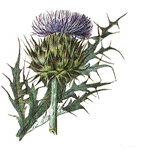Papers in the Biological Sciences

Svata M. Louda Publications
Document Type
Article
Date of this Version
2004
Abstract
The most fundamental question in considering deliberate introductions of exotic species against invasive species is whether the outcomes can be predicted precisely enough a priori to know with some certainty that the benefits will outweigh the environmental costs. This issue is obscured by reiteration of an overly simplistic description of the ecology underlying biological control. Classical biological control is not a simple exercise in “community re-assemblage” (Hoddle 2004); it involves the introduction of alien organisms into new species assemblages, in new physical environments, and without the rest of their foodweb. Predicting the outcome of such introductions is infinitely more complex than implied by the idea of “reestablishing natural enemies” of an invasive species. Direct ecological interactions are difficult enough to predict, but indirect interactions— those mediated through a third species or foodwebs—are even harder to predict (Strauss 1991; Paine 1992; Wooton 1994; Menge 1997). In suggesting that biocontrol efforts are “restoring balance” by “using exotic species to control invasive exotic species,”Hoddle (2004 [this issue]) skirts the essential ecological issue: predicting the magnitude of the outcome of the full set of new interactions in a new environment.
Our aim is to review more, highly relevant evidence and to outline an alternative, ecological perspective on the use of “exotics to control invasive exotics” (Hoddle 2004). We summarize data on nontarget effects that were ignored or that challenge Hoddle’s interpretations and then briefly address the points he raised on classical biological control. This synopsis highlights important reasons for increased caution and continuing development of improved ecological risk assessment, especially for conservation and restoration. In these contexts in particular, we think that the overarching guideline, as in medicine, should be, first, do no harm (Simberloff & Stiling 1996).


Comments
Published in Conservation Biology 18:1 (2004), pp. 50–53; doi: 10.1111/j.1523-1739.2004.00070.x Copyright © 2004 Society for Conservation Biology; published by Wiley-Blackwell. Used by permission. http://www.wiley.com/bw/journal.asp?ref=0888-8892